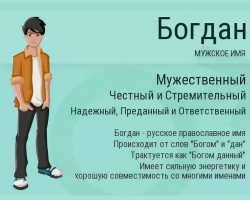From this article you will learn about the dangers and benefits of viruses.
Content
- The harm of viruses for the human body, what is the danger: exposure
- Bacteria causing viruses: What is the difference from viruses?
- Are there any benefits from viruses for the human body: flu, herpes infections of different types on the skin
- Bacteriophages bacteria bacteria viruses, the study of the genome: what is the benefit?
- TOP-10 useful viruses for humans
- Japanese human viruses: benefits and harms
- Air Doctor - Virus blocker: reviews
- Video: viruses: types, device and methods of cell infection
In the world there are viruses of bacteria, plants, insects, animals and humans. These are some smallest organisms in the form of genetic material, which is surrounded by a special cocoon. These are parasites of the cells of the living organism, which falling into it, begin to slowly or quickly destroy. They have no cells, unlike all other organisms living on our planet.
Everyone knows that viruses are very dangerous. They cause diseases in individuals, and sometimes entire epidemics, as a result of which thousands and millions die. But is everything so clear? Let's try together to figure out who these microscopic killers are and whether they are always harmful. What is the benefits and harm of viruses? Read about this in this article.
The harm of viruses for the human body, what is the danger: exposure

The painful smallest genetic material, entering the body, destroys the host cell, and this is the most important harm of viruses for the human body and any other living creature.
- The danger consists in negative effects on a good cell, as well as in the course of the process of embedding the genetic information of the virus into the genetic material of the affected cell.
- Inside the affected cell, independent assembly of viral smallest particles is performed in full -fledged new viruses.
- The danger of viruses also lies in the fact that these are the causes of many incurable diseases, for example, HIV (flowing into AIDS), hepatitis, poliomyelitis, rabies and others.
- It is impossible to completely cure these diseases. You can maintain the condition of the body, but it will not work to get rid of forever.
- The influenza virus, for example, is new every year, and more and more complications appear. There is even a vaccine, but people still get sick. Read in the article on our website about 12 most difficult complications flu.
There are cases in the modern world that indicate that we are still defenseless in the face of a viral danger, despite the development of medicine. For example:
- The AIDS virus has been walking around the planet for several decades, and in some countries, including Russia, it has acquired the nature of the epidemic.
- Ebola fever has recently created a huge panic in the world due to the outbreak of infection in Africa.
- In 2005, all of Japan went in gauze bandages due to fear of bird flu.
But perhaps the viruses are not only our enemies, but also friends. One of the scientific hypotheses suggests that mutations in the DNA of human ancestors caused by diseases may have led to the development of our species to modern man. But first of all, it is worth finding out what a virus is and how it acts.
Bacteria causing viruses: What is the difference from viruses?

Many people do not distinguish viruses and bacteria, but in vain. After all, there are many differences between these organisms:
Firstly:
- Among bacteria, there are very few those that cause diseases, but viruses all lead a parasitic lifestyle. This is not surprising, because for life the virus is simply necessary for a living cage.
- In general, these small creatures before being inflated into the body of the carrier are not at all like living organisms.
- They consist of the same organic molecules as all living organisms, and have DNA or RNA chains, but before getting into a favorable environment, do not show activity.
- Once inside the body, the viruses “come to life” and begin to attack cells.
- It can be the cells of any animal, including a person, insect, plants, bacteria or even another virus.
- Viruses affect any living organisms. They do this in order to multiply.
- Once inside the cage, the virus begins to use its resources to produce its own copies.
- The cell captured by the virus works for wear. She slowly depletes her resources and usually dies, and the viruses produced by her come out and amaze neighboring cells.
Second difference:
- It consists in the structure.
- If the bacterium is a full -fledged living cage, then the virus is usually ring, like a bacteria, a genetic chain that “travels” in a protein shell.
- On this shell there are often special growths that allow the virus to “cling” by the cage and infect it.
- There are also viruses that affect only bacteria - bacteriophages. Their structure is more complicated than others. Bacteriophages vaguely resemble a syringe. They have a head, legs that fix the body of the virus on the cell wall of the bacteria, and the “needle” through which genetic material is injected into the bacterium.
Another difference:
- Each virus has its own sphere of influence.
- For example, there is not a single fixed case of human damage by a plant with a virus, and vice versa.
- It is also worth noting that some viruses can be relatively peacefully within a representative of one biological species, but to be deadly for another.
- The AIDS virus went to people from monkeys. This virus themselves does not bring tangible damage, but its mutated variety is a great threat to people.
Virus mutations occur very quickly. Because of this, for example, humanity is forced to select a vaccine from the notorious influenza virus every year, and its unknown mutations lead to epidemics with many victims. But everything is not so bad. Viruses can be useful. Read about this later.
Are there any benefits from viruses for the human body: flu, herpes infections of different types on the skin

In fact, viruses that kill their owners lose to those who have learned to live inside the body for a long time. For example, it is worth noting the following:
- The virus or herpes infection of different types on the skin, which has 95% of people, propagates much better than the causative agent of any deadly infection.
- It affects nerve cells that are not checked by the immune system, so it is not detected by natural body protection systems.
- In addition, this virus does not cause special inconvenience to its carrier and manifests itself only in the form of acne on the skin.
- Co -coexisting with a person, Herpes lives a long life with his master, which means that he produces a lot of his own copies.
Surely, many thought about the prospect of destroying all viruses and bacteria that cause infectious diseases. This is very tempting, but impossible at this stage in the development of mankind. It is also worth remembering that even more aggressive and unknown microscopic killers can replace the viruses usual. Therefore, the extermination of these organisms may come out sideways.
So are there any benefits from viruses for the human body? It is worth noting the following aspects:
- Viruses also participate in the natural selection of people, no matter how cruel it sounds.
- Attacking people of people, the virus lasts those who are not able to withstand it, but those who can resist, receive immunity to a specific type of virus.
- This immunity is transmitted from parents to children, and thus all humanity strengthens its epidemiological “shield”.
- According to the forecasts of scientists, even if we do not learn how to heal the human immunodeficiency virus, then by 2300 it will become as not dangerous for us, like herpes.

Such a fact is also interesting:
- Having penetrated the cage, different viruses propagate differently.
- The so -called retroviruses, which include HIV, are especially the outlandish way to create your own copies. This type of viruses makes changes to the DNA of the attacked cell, introducing its genetic code into it.
- In the case of infection, the cell cannot determine the foreign code inside its own, so it produces viral proteins, like its own.
- If sex cells are subjected to such invasion, then the virus can be transmitted from parents to children.
- After some time, this piece of the genetic code will be recognized and disconnected, but sometimes such mutations can be useful.
- In this case, the genetic sequence will not be deactivated, and the host body will receive some kind of evolutionary advantage.
According to scientists, in the genome of modern man there are 5-8 percent of inclusions that we got from viruses. This means that once viruses could take a direct part in the evolution of man. As for the influenza virus, its benefits are also obvious:
- Every year, a new type of this virus appears and the human body is forced to constantly produce antibodies.
- That is, immunity is always “in case”, and this is very good, since if there is no “work” for him, then immunity begins to destroy its own cells.
- Hence, seasonal allergies and various autoimmune diseases can develop.
There is also another type of useful viruses. Read more about this.
Bacteriophages bacteria bacteria viruses, the study of the genome: what is the benefit?

It should be noted that in recent years, some viruses have put scientists to the service of a person. For example, bacteriophage bacteriophages bacteriophage viruses can help humanity in the fight against bacterial infections that will soon become incurable due to resistance to antibiotics.
Also, without viruses, it is impossible to imagine the editing of the genome:
- Nowadays, experiments with HIV are underway.
- Scientists remove the entire malicious genome from it and use the virus to transport useful genes.
- Such a study of the genome - genetic code will soon help to get rid of the most dangerous incurable diseases forever.
Perhaps in the future this will help cure many genetic diseases, including cancer and AIDS itself. Therefore, it cannot be said that viruses are absolute evil, because they can be useful. Below you will find information about the most useful viruses for humans. Read further.
TOP-10 useful viruses for humans

If you tell someone that viruses can be useful, then a person will most likely look at you with surprise. But, if you still think, then it was known about this for a long time. Even Paracelsus understood and conveyed to people that the poison from the medicine is distinguished by a dosage. Therefore, let's figure out which viruses can be useful.
Here are the top 10 useful viruses for humans:
Bacteriophages:
- There are such viruses in our body. They are on the mucous membranes.
- Scientists have long conducted research with bacteriophages, which were placed in the same environment with harmful bacteria.
- As a result, the bacteriophages “won” and killed bad viruses.
- In this case, they do not infect human cells and therefore can be used in the treatment of bacterial infections.
GB Virus C ABC:
- This virus has not yet been fully studied in this role, although it has been known for a long time - this is hepatitis C.
- The experiments show that HIV ceases to develop if the hepatitis C virus appears in the body.
- Many scientists argue that this virus will also help to defeat Ebola's fever.
Viral proteins on guard of cells:
- Recently, scientists from the American University conducted studies of cells of a 3-day embryo.
- Many protein structures of different viruses were discovered. As a result, it became clear that many viruses are able to unite against their own kind.
- For example, the REC virus has increased protein levels of a different type of infection-IFITM1, which did not pass dangerous viral infections into the embryo cells.
Viruses that help training:
- When a person is small, his brain is like a sponge and absorbs all the information, knowledge and skills.
- Such a “time window” opens using ARC protein.
- Scientists have found that this viral protein transmits information from neuron to neuron.
- It is assumed that this virus has long been into the human body along with another infection. Then he “fell asleep”, and the cells began to use viral proteins for their purposes.

Stomatitis helps to cure oncology:
- Scientists use this virus for the benefit of mankind. But not the usual stomatitis, which often appears in people, but its special type is vesicular VSV. It is common in horses and transmitted to people. But we are manifested only in the form of blisters on mucous membranes. It is not dangerous and almost harmless to a person.
- Scientists genetically changed VSV and successfully began to treat patients with liver cancer.
- Its essence is that it multiplies at high speed only in cancer cells that are devoid of antiviral protection.
Norovirus:
- This pathogenic microorganism, which causes the gastrointestinal tract.
- But some strains of this virus were useful, but so far only for laboratory mice that had problems with the intestines.
- Perhaps in a few years specific strains of this virus will be used to treat gastrointestinal diseases.
Endogenic retroviruses:
- Responsible for livestock.
- Thanks to them, ancient people have a placenta as a result of a mutation of a genetic code, and now a person, like all mammals, can give birth to his offspring, and not lay eggs, such as birds.
- In addition, with such intrauterine development, a person has more brain and good mental abilities developed.
Gammaggerpes-viruses:
- Each person is familiar with symptoms of food poisoning. This ailment is caused by special bacteria.
- But there is a government and this is a Gammagerper-Virus MHV-68 on such an infection.
- If such an infection proceeds in an opened form, then a person will never have food poisoning. But this does not mean that in order to get rid of one threat it is necessary to become infected with another virus.

Adenovirus - guard against cancer:
- This is a very terrible and contagious virus that can cause a cold, gastroenteritis and even pneumonia.
- At the same time, a specific strain of adenovirus is perfectly binded to carbohydrates of cancer cells, destroying them.
- This fact is still studied by scientists, but one thing is already clear that such a virus in the future will wage a successful fight against cancer.
The virus saving from the heat:
- This is a microorganism that is absent in the human body. But people need it, and even plants to withstand the heat.
- Such a virus infects an endophytic fungus growing on tropical plants. And they know, and the heat is above 40 degrees nothing.
- Scientists have introduced this virus into other plants growing in our lane and they received excellent resistance to high temperatures. For example, tomatoes with such a virus can grow perfectly in the heat at 60 degrees. But as soon as the virus disappears from the plant, it immediately loses heat resistance and dies.
As you can see, there are many viruses that we need in nature.
Japanese human viruses: benefits and harms

Japanese human viruses blocks are of two types:
- A small container for disinfecting the premises
- Minimum pillow for individual use
These containers contain a special filler, which is impregnated with chlorine dioxide. The benefits of such an element are to disinfect, as well as in the current beginning of bactericidal and antiviral action.
However, it is worth remembering how any medicine or prophylactic of this virus blocker has optimal dosages of use, toxic doses and side effects:
- Chlorine dioxide is toxic and in large doses is deadly. Scientists have even discovered a negative effect of this substance on pregnant women in the form of teratogenic effects on the fetus.
- It is known that chlorine negatively affects the body and leads to the development of cancer. In particular, it is dangerous in relation to children.
- Many people, putting on such individual protection against viruses, lose vigilance, hoping for the miraculous effect of the blocker. They forget to put on a hat in winter, go in an unbuttoned jacket at sub -minus temperature. As a result, a person gets a cold or even pneumonia.
- Pregnant women and children better refrain from using such a tool. It is not known how chlorine dioxide will affect the children's body and the fetus if the future mother will inhale his pairs. Maybe that's why in kindergartens of Japan it is forbidden to use such viruses.
Although chlorine dioxide will help to suppress a viral reproduction, but this is not a panacea. It is also necessary to protect yourself from cold, frost and all viruses. Read people's reviews about this blocker below.
Air Doctor - Virus blocker: reviews

Air Doctor is a Japanese human virus blocker, which is considered one of the most effective means for preventing against infection. It can be in two trim levels: children and adults. Read the reviews of people who specially stock up on this tool to protect themselves from viruses:
Nicole, 29 years old
I have been living in Russia for several years. Air Doctor viruses blocked from America. You can only buy from the distributors from Japan. They bring little funds and quickly disassemble it. I bought with a shelf life for 2 months, wore in winter during the flu epidemic. I never got sick, although everyone sneezed, coughed and temperature. A year later I bought a child - for my son. By the way, in kindergarten, many parents put on such a block on their children.
Artem, 31 years old
I brought such a virus block (in the amount of 6 pieces) from Japan, a friend who works there. I only want to note that he did not help me, and I got sick in February. The wife wore all winter - the infection bypassed her. Therefore, I definitely can’t say anything.
Roman, 28 years old
I do not believe in such a prevention, but I brought my mother from the USA. She liked it and said that this year she was not sick thanks to the Air Doctor. I saw that I was constantly worn, even at home. She did not feel the smell of chloride, but the neighbor who came to visit her noted some kind of extraneous aroma. I heard that everything depends on the sense of smell - one person does not hear the smell under the nose, and the other after a meter is teaching. Therefore, everything is individual.
Video: viruses: types, device and methods of cell infection
Read articles on the topic:







